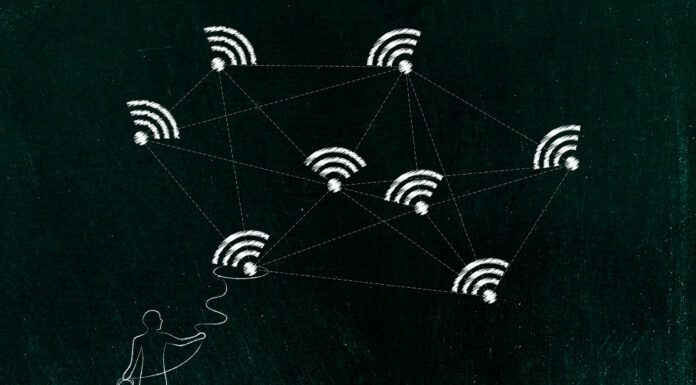As billions of devices go intelligent, next-gen Wi-Fi is emerging as the quiet powerhouse behind our connected future
Wi-Fi has evolved from its inception in the 1980s to become a foundational pillar of modern connectivity. While the rise of smartphones in the late 2000s propelled Wi-Fi into ubiquity, its role has continued to expand. As connectivity extends far beyond mobile devices, Wi-Fi now enables a growing number of industrial and immersive use cases. Looking ahead, Wi-Fi is poised to support the decentralization of artificial intelligence (AI), facilitating distributed and federated learning across billions of devices. This evolution cements Wi-Fi not just as a connectivity standard, but as the infrastructure of next-generation technological advancements.
From 2Mbps to global connectivity
Wi-Fi originated in the ‘80s as a promising technology to operate in the unlicensed ISM bands with speeds of up to 2 Mbit/s. Over time, advancements like higher-order modulation, MIMOa nd multiple spatial streams significantly boosted performance. In 2007, the smartphone revolution further accelerated Wi-Fi adoption, as billions of devices relied on it for internet access. The surge in mobile use for HD video streaming, video callinga nd cloud gaming drove Wi-Fi innovation to provide wireless communications with higher speeds, lower latency and improved reliability.
Connectivity everywhere
As the smartphone market matured, a growing number of devices became “smart” and internet-connected, giving rise to the Internet of Things (IoT). Today, Wi-Fi-enabled low-power SoCs allow everything from household appliances to industrial sensors to seamlessly connect to the cloud for data analytics, remote monitoring and control. This expansion illustrates how Wi-Fi is evolving from a passive conduit to an active enabler of decentralized applications.
One emerging use case in this context can be found in industrial settings, where reliable connectivity has become mission-critical, particularly in warehouse logistics, where Autonomous Mobile Robots (AMRs) offload compute-intensive tasks to edge or cloud servers for improved efficiency and cost savings. These AMRs can also share partial 3D reconstructions of their surroundings, enabling collaborative map-building of entire facilities to enhance navigation, safety and operational management.
Wi-Fi and immersive technologies
Another emerging use case is wireless extended reality (XR). Currently, interaction with smart devices is through two-dimensional interfaces, i.e., flat screens, but in the coming years, these interfaces will become three-dimensional and fully immersive with the use of XR headsets.
To make this vision a reality, headsets must reduce size and weight while dramatically increasing computational capacity. Wi-Fi plays a pivotal role here, by enabling the offloading of compute-intensive tasks — such as asset rendering, visual-inertial odometry, environment mapping and scene understanding — to the edge or the cloud. These applications require high-throughput, reliable and low-latency communication.
Recently, Wi-Fi has added new improvements to achieve this goal such as triggered medium access, wider communication channels (up to 320 MHz) and access to the unlicensed 6GHz band, where only non-legacy Wi-Fi devices, i.e., Wi-Fi 6 and beyond, can operate.
What’s next for Wi-Fi?
The future of Wi-Fi is bright, with an expected 32.1 billion devices by 2030, a remarkable increase from 15.9 billion in 2023. In the coming years, AI will play a pivotal role in how Wi-Fi evolves. With the recent breakthroughs in large language models (LLMs), large investments in AI are being made. Most of the trained models today are deployed in large power-hungry data centers. Even though current solutions are effective, the forecasted massive adoption of AI technologies make their scalability a challenge.
To address this issue, smaller local models will be wirelessly distributed and updated in client devices equipped with custom hardware to perform inference using these models. In other words, AI will be decentralized and become distributed/federated.
This shift toward decentralized AI will require ultra-reliable, high-speed connectivity, making next-generation Wi-Fi technologies, such as Wi-Fi 8 and beyond, critical enablers. Advancements like millimeter wave support and coordinated time-division multiplexing will facilitate real-time and reliable AI model updates, ensuring that near-edge devices can adapt without relying solely on cloud computing.
Additionally, innovations such as multi-link operation and improved spectrum utilization will further optimize network performance, allowing AI-powered devices to interact more intelligently and efficiently with the cloud. As AI-driven applications become increasingly integrated into daily life — ranging from real-time language processing to immersive XR experiences and home robotics — Wi-Fi will serve as the backbone of this transformation, delivering low-latency, ultra-reliable and secure communications across billions of interconnected AI-powered devices.
Beyond performance improvements, next-generation Wi-Fi will also focus on network intelligence and adaptability. AI-driven Wi-Fi optimization will enable networks to dynamically allocate resources, predict congestion and adjust traffic prioritization in real time, ensuring seamless connectivity for critical applications. Moreover, advances in Wi-Fi for energy-efficient communications will help extend battery life for IoT and wearable AI devices, making continuous AI processing more sustainable.
With these innovations, Wi-Fi will not only support AI but also evolve into an intelligent connectivity framework, becoming a dynamic and intelligent force that will revolutionize autonomous systems, enable the transformation of industrial automation and help redefine the future of productivity through immersive experiences.

